Get to know: Most famous ceramic pottery in history
Throughout history, ceramic pottery has been a vital form of artistic expression, serving both functional and decorative purposes. From the intricate designs of ancient cultures to the refined elegance of contemporary pieces, ceramic pottery tells a story of human creativity and cultural significance. Each piece is not just a vessel; it’s a reflection of the society that created it, embodying their values, beliefs, and artistic trends. Whether it’s the delicate porcelain of China or the vibrant Talavera pottery from Mexico, these ceramics have captivated audiences for generations.
But what makes these pieces so special? It's the craftsmanship involved and the rich history behind them that truly sets them apart. Imagine the skilled hands of artisans molding clay, their minds filled with inspiration drawn from their surroundings. As we explore the world of ceramic pottery, we’ll uncover the techniques that have been passed down through generations, the cultural influences that shape their designs, and the stories that each piece carries.
In this article, we will take a journey through time and space, highlighting some of the most famous ceramic pottery in history. We’ll delve into the origins of ceramic art, examining how it emerged as one of humanity's earliest forms of creative expression. We’ll explore renowned styles, such as Chinese porcelain and Japanese ceramics, and discuss their significance within their respective cultures. Additionally, we’ll look at the vibrant world of Mexican Talavera pottery and the functional artistry of Ancient Greek pottery.
As we navigate through these fascinating topics, it’s essential to recognize that ceramic pottery is not just an art form; it’s a bridge connecting us to our past, a tangible piece of history that continues to inspire modern artists. So, whether you’re an art enthusiast, a history buff, or simply curious about the world of ceramics, join us as we uncover the beauty and significance of these timeless creations.
Understanding the beginnings of ceramic pottery reveals its ancient roots and the techniques used by early civilizations, setting the stage for its evolution across different cultures and time periods.
Chinese porcelain is celebrated worldwide for its beauty and craftsmanship. This section delves into its history, production methods, and the impact it has had on global ceramic traditions.
The Ming Dynasty marked a golden age for Chinese porcelain, introducing innovative designs and techniques. This part examines the significance of Ming porcelain in art and commerce.
Blue and white porcelain became iconic during the Ming Dynasty. Here, we explore its origins, popular motifs, and enduring appeal across various cultures.
Modern Chinese ceramics continue to innovate while honoring tradition. This section highlights contemporary artists who blend traditional techniques with modern aesthetics.
Japanese ceramics are known for their unique styles and meticulous craftsmanship. This section discusses the cultural influences that shape Japanese pottery today.
Talavera pottery is a vibrant expression of Mexican culture. This part explores its history, distinctive designs, and the artisans who keep the tradition alive.
The techniques used in creating Talavera pottery are intricate and varied. Here, we examine the processes that make this pottery unique and sought after.
Ancient Greek pottery serves not only as functional ware but also as a canvas for storytelling. This section discusses the artistic styles and themes depicted in Greek pottery.
The black-figure and red-figure techniques revolutionized Greek pottery, allowing for detailed imagery. This segment explains the differences and significance of these methods in ancient art.
Ceramic pottery remains a vital part of human expression and culture. This conclusion reflects on the lasting impact of these historical pieces on contemporary art and society.
- What is ceramic pottery? Ceramic pottery is art made by shaping and then firing a non-metallic mineral, such as clay, at high temperatures.
- How has ceramic pottery evolved over time? Over time, pottery techniques and styles have evolved due to cultural exchanges, technological advancements, and artistic innovations.
- What are the different types of ceramic pottery? Common types include earthenware, stoneware, porcelain, and bone china, each with unique characteristics and uses.
- Why is Chinese porcelain so highly valued? Chinese porcelain is valued for its delicate beauty, strength, and the intricate craftsmanship that has been honed over centuries.
- What role does pottery play in modern art? Pottery continues to be a medium for artists to express their creativity, blending traditional techniques with contemporary themes.

The Origins of Ceramic Pottery
Understanding the beginnings of ceramic pottery reveals a fascinating journey that dates back thousands of years. The earliest evidence of pottery dates to around 29,000 BCE, discovered in what is now the Czech Republic. These primitive creations were not just functional; they represented a significant leap in human ingenuity. Imagine our ancestors, gathering clay from riverbanks, molding it with their hands, and then firing it in rudimentary kilns. This was more than just a craft; it was the birth of a new way to store food, cook, and even express artistic ideas.
As civilizations blossomed, so did the techniques of pottery making. The ancient Chinese were among the first to master the art, developing methods that would influence pottery for centuries. Similarly, the Mesopotamians and Egyptians used pottery not only for utility but also for ceremonial purposes. These cultures laid the groundwork for the diverse styles and techniques that would emerge worldwide.
The significance of pottery extends beyond its practical applications. It serves as a historical record, providing insights into the daily lives, beliefs, and customs of ancient peoples. For instance, the intricate designs found on Greek pottery depict mythological scenes, telling stories that have captivated audiences for generations. This artistic expression was not just for decoration; it was a way to communicate cultural values and societal norms.
Over the centuries, various regions developed their own unique styles and techniques in pottery making. Here’s a brief overview of some key origins:
| Region | Key Contributions |
|---|---|
| China | Porcelain, intricate glazes, and innovative firing techniques. |
| Greece | Black-figure and red-figure pottery techniques, storytelling through art. |
| Mexico | Talavera pottery, vibrant colors, and cultural symbolism. |
| Japan | Wabi-sabi aesthetics, unique firing methods, and tea ceremony ware. |
As we delve deeper into the world of ceramic pottery, it becomes clear that this art form is not merely about creating functional objects. It is a reflection of human creativity, cultural identity, and technological advancement. Each piece tells a story, connecting us to our past and influencing future generations of artists and craftsmen.
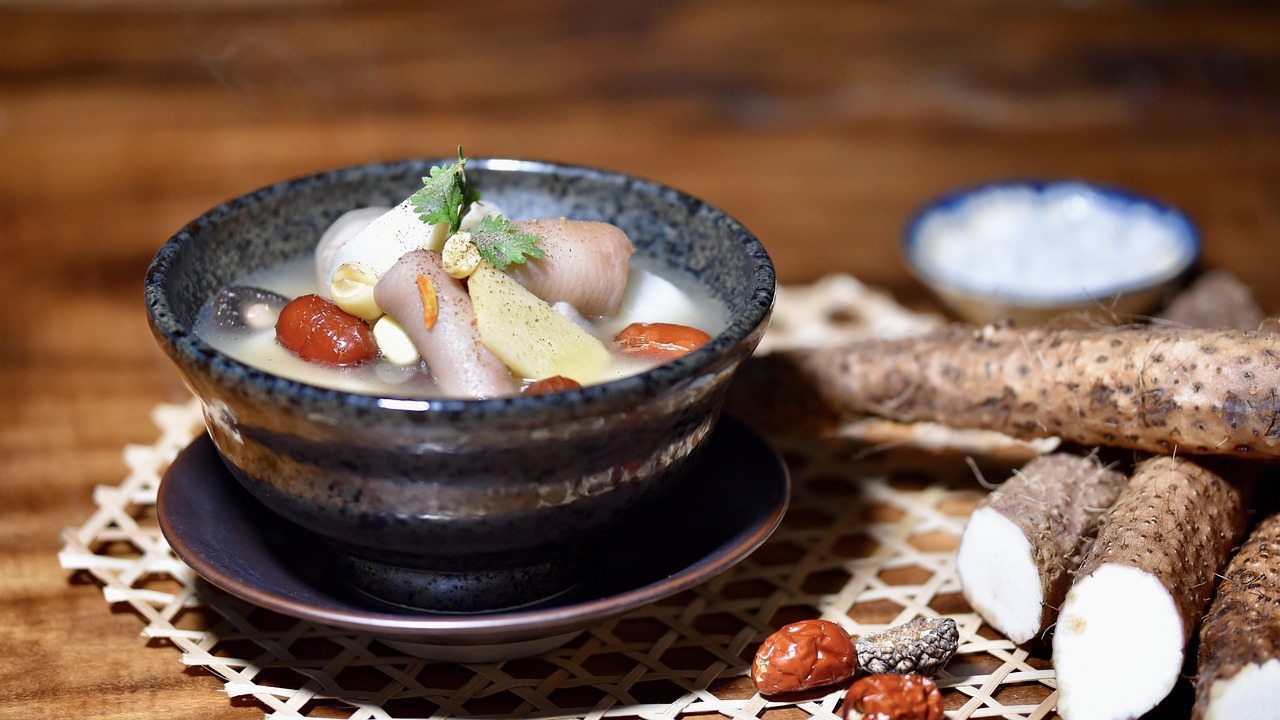
Chinese Porcelain: A Timeless Classic
When we think of ceramic artistry, one name that inevitably comes to mind is Chinese porcelain. Renowned for its exquisite beauty and unparalleled craftsmanship, Chinese porcelain has captivated collectors and art enthusiasts for centuries. Its origins can be traced back to the Tang Dynasty (618-907 AD), but it was during the Song Dynasty (960-1279 AD) that porcelain truly began to flourish, setting the stage for what would become a global phenomenon. The meticulous techniques employed by artisans, combined with the rich cultural heritage of China, have made this art form a symbol of sophistication and elegance.
Chinese porcelain is not just about aesthetics; it tells stories through its designs and motifs. The intricate patterns often depict elements of nature, mythology, and daily life, reflecting the values and beliefs of Chinese society. For instance, the use of dragons symbolizes power and strength, while lotus flowers represent purity and enlightenment. These elements are more than mere decoration; they serve as a window into the cultural psyche of the time.
The production of Chinese porcelain involves a complex process that requires both skill and patience. It begins with the selection of high-quality clay, which is then shaped into the desired form. The pottery is fired at high temperatures, resulting in a durable and non-porous material. After the initial firing, the pieces are glazed and decorated before undergoing a second firing, which enhances their beauty and durability. This two-step firing process is crucial, as it allows for vibrant colors and intricate designs that are characteristic of Chinese porcelain.
One of the most significant periods in the history of Chinese porcelain is the Ming Dynasty (1368-1644). This era is often regarded as the golden age of porcelain production, marked by the introduction of innovative techniques and designs that would influence ceramic traditions worldwide. The Ming artisans perfected the art of blue and white porcelain, using cobalt oxide to create stunning blue patterns on a white background. This style became immensely popular, not only in China but also in Europe and beyond, leading to a significant impact on global ceramic traditions.
Today, the legacy of Chinese porcelain continues to thrive. Contemporary artists are blending traditional techniques with modern aesthetics, creating pieces that honor the past while pushing the boundaries of creativity. These modern interpretations often incorporate new materials and technologies, resulting in a dynamic fusion of old and new that appeals to a diverse audience. In this way, Chinese porcelain remains a living art form, continuously evolving while retaining its rich heritage.
- What is the difference between porcelain and pottery?
Porcelain is a type of ceramic that is fired at higher temperatures than traditional pottery, making it more durable and non-porous. - How can I identify genuine Chinese porcelain?
Look for a translucent quality when held up to the light, a smooth and glossy surface, and intricate designs that reflect cultural themes. - Are there different types of Chinese porcelain?
Yes, there are several types, including blue and white porcelain, famille rose, and celadon, each with unique characteristics.
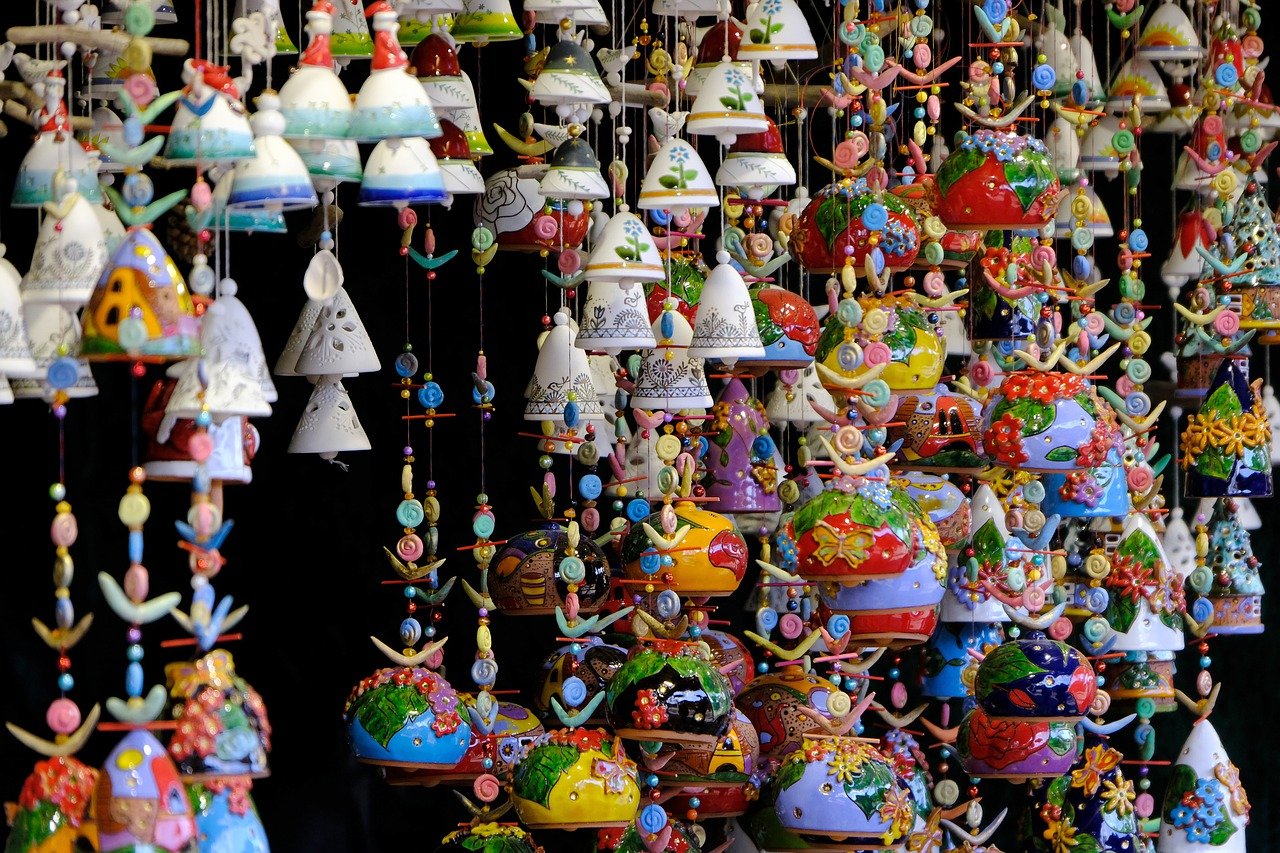
The Ming Dynasty Influence
The Ming Dynasty, which spanned from 1368 to 1644, is often heralded as the golden age of Chinese porcelain. During this period, artisans perfected their craft, leading to the creation of some of the most exquisite pottery ever produced. The influence of the Ming Dynasty on ceramic artistry cannot be overstated; it set the groundwork for techniques that are still revered today. Imagine a time when each piece of porcelain was not just a vessel but a canvas, telling stories of the world around it through intricate designs and vibrant colors.
One of the standout features of Ming porcelain is its remarkable blue and white ware, which became a hallmark of this era. The stunning cobalt blue pigment, often contrasted against a pristine white background, was not only visually striking but also symbolized the prosperity of the time. This color combination was achieved through a meticulous process that involved painting the designs on the porcelain before it was glazed and fired. The result? An enchanting interplay of color that has captivated collectors and enthusiasts alike for centuries.
During the Ming Dynasty, the imperial court played a crucial role in the ceramic industry. The demand for high-quality porcelain skyrocketed, leading to the establishment of state-run kilns that specialized in producing pieces for the emperor and his court. This not only ensured the highest standards of quality but also encouraged innovation in design and technique. The artisans were not merely craftsmen; they were artists, constantly pushing the boundaries of their creativity. As a result, the Ming period saw the introduction of various forms, including vases, bowls, and plates, each adorned with intricate patterns and motifs that often depicted nature, mythology, and daily life.
To illustrate the impact of the Ming Dynasty on porcelain, consider the following table showcasing some of the most notable characteristics of Ming ceramics:
| Characteristic | Description |
|---|---|
| Color Palette | Primarily blue and white, with occasional use of other colors such as red and green. |
| Design Motifs | Floral patterns, dragons, phoenixes, and scenes from nature. |
| Techniques | Under-glaze painting and over-glaze decoration. |
| Forms | Vases, plates, bowls, and figurines. |
The legacy of Ming porcelain extends beyond its aesthetic appeal; it has also had a profound influence on global ceramic traditions. As trade routes expanded, these exquisite pieces made their way to Europe and beyond, inspiring countless artisans and collectors. The demand for Ming porcelain in the West was so great that it led to the development of European porcelain, most notably in Germany and France, where artisans sought to replicate the beauty and craftsmanship of their Chinese counterparts.
In conclusion, the Ming Dynasty was not just a period in history; it was a transformative era that shaped the future of ceramic artistry. The techniques and styles developed during this time continue to inspire modern potters, reminding us of the enduring power of creativity and craftsmanship. Whether you are a seasoned collector or a casual admirer, the beauty of Ming porcelain is a testament to the artistry that transcends time and culture.
- What is Ming porcelain? Ming porcelain refers to the ceramic ware produced during the Ming Dynasty, known for its high quality and distinctive blue and white designs.
- Why is the Ming Dynasty significant in ceramics? The Ming Dynasty is significant because it marked a golden age for porcelain production, introducing innovative techniques and styles that influenced global ceramic traditions.
- What are common motifs found in Ming porcelain? Common motifs include floral patterns, dragons, phoenixes, and scenes depicting nature and mythology.
- How did Ming porcelain influence European ceramics? The demand for Ming porcelain in Europe led to the development of European porcelain, as artisans sought to replicate its beauty and craftsmanship.

Blue and White Ware
Blue and white porcelain, often regarded as one of the most recognizable forms of ceramics, has a rich history that dates back to the Ming Dynasty in China. This stunning pottery is characterized by its intricate blue designs painted on a white background, creating a striking visual contrast that has captivated art lovers and collectors for centuries. The origins of this art form can be traced back to the 14th century when Chinese artisans began experimenting with cobalt blue pigments imported from Persia. This innovation not only transformed the aesthetic appeal of porcelain but also set the stage for a new era in ceramic artistry.
As the popularity of blue and white ware grew, it began to influence ceramic production beyond China's borders. The exquisite designs often depicted scenes from nature, mythical creatures, and traditional Chinese motifs, showcasing the skill and creativity of the artisans. One of the most famous patterns is the “Willow Pattern,” which tells a romantic story through its imagery, capturing the imagination of those who view it. This design became so popular that it was replicated by European potters, leading to a fusion of styles that enriched the global ceramic landscape.
Throughout history, blue and white porcelain has been associated with wealth and prestige. It was often used as a status symbol among the elite, and its presence in homes signified sophistication and taste. Today, collectors and enthusiasts seek out antique pieces, as well as contemporary works that honor traditional techniques while incorporating modern designs. The enduring appeal of blue and white ware lies not only in its aesthetic beauty but also in the stories it tells—stories of cultural exchange, artistic innovation, and the timeless human fascination with beauty.
In contemporary times, artists continue to explore the boundaries of blue and white ceramics, experimenting with new forms and techniques. Many modern potters draw inspiration from traditional motifs while introducing contemporary themes that resonate with today's audience. This blend of old and new ensures that blue and white ware remains a vital part of the ceramic arts, continually evolving while honoring its rich heritage.
- What is blue and white ware? Blue and white ware is a type of porcelain that features blue designs painted on a white background, originating from China during the Ming Dynasty.
- What are the common motifs used in blue and white porcelain? Common motifs include floral patterns, landscapes, mythical creatures, and scenes from folklore and literature.
- Why is blue and white ware so popular? Its popularity stems from its striking visual appeal, historical significance, and the intricate craftsmanship involved in its creation.
- How has blue and white ware influenced global ceramics? The style has inspired potters around the world, leading to the development of similar styles in Europe and beyond, creating a rich tapestry of ceramic traditions.

Contemporary Chinese Ceramics
In the vibrant world of , tradition and innovation dance together in a mesmerizing display of artistry. Today's ceramic artists in China are not merely custodians of age-old techniques; they are also fearless innovators, pushing the boundaries of what pottery can be. They infuse their work with a modern sensibility while paying homage to the rich heritage that has shaped their craft for centuries. This unique blend creates pieces that resonate with both historical significance and contemporary relevance, captivating collectors and art enthusiasts alike.
One of the most exciting aspects of contemporary Chinese ceramics is the diverse range of styles and techniques that artists are exploring. From the intricate hand-painted designs reminiscent of the Ming Dynasty to the sleek, minimalist forms that echo modern design principles, the spectrum is broad and beautiful. Artists like Ai Weiwei and Yin Xiuzhen are redefining the medium, using ceramics as a platform to express their views on social issues, environmental concerns, and cultural identity. Their works often provoke thought and dialogue, making ceramics not just a visual art form but a commentary on the world we live in.
Moreover, the use of traditional materials and techniques remains a cornerstone of contemporary practice. Many artists are committed to sourcing local clays and utilizing time-honored firing methods, such as wood-firing and gas-firing, which impart unique textures and glazes to their creations. This dedication to craftsmanship is evident in the meticulous attention to detail and the passion that goes into each piece. As a result, contemporary Chinese ceramics are not only visually stunning but also deeply rooted in cultural narratives that tell stories of resilience and innovation.
As we explore this dynamic field, it's essential to recognize the role of galleries and exhibitions in promoting contemporary ceramics. Events like the China International Ceramics Biennale provide a platform for emerging artists to showcase their work to a global audience. These exhibitions not only highlight the talents of individual artists but also foster a sense of community among ceramicists, encouraging collaboration and inspiration. The international recognition of these events also helps to elevate the status of ceramics within the broader art market, making it an exciting time for both artists and collectors.
In conclusion, contemporary Chinese ceramics represent a thrilling intersection of tradition and modernity. They invite us to appreciate the beauty of craftsmanship while engaging with the pressing issues of our time. As these artists continue to innovate and inspire, we can expect their work to leave an indelible mark on the global ceramics landscape, ensuring that the legacy of Chinese pottery endures for generations to come.
- What defines contemporary Chinese ceramics?
Contemporary Chinese ceramics are characterized by a blend of traditional techniques and modern aesthetics, often reflecting current social and cultural themes. - Who are some notable contemporary Chinese ceramic artists?
Artists like Ai Weiwei and Yin Xiuzhen are prominent figures in the contemporary ceramics scene, known for their innovative approaches and thought-provoking works. - How do contemporary artists incorporate traditional methods?
Many contemporary artists use local clays and traditional firing techniques while experimenting with new forms and designs to create unique pieces. - Where can I see contemporary Chinese ceramics?
Exhibitions like the China International Ceramics Biennale showcase contemporary ceramic art and provide a platform for emerging artists.

Japanese Ceramics: A Blend of Tradition and Innovation
Japanese ceramics represent a fascinating intersection of tradition and innovation, showcasing a rich history that dates back thousands of years. The artistry involved in Japanese pottery is not merely about creating functional items; it is a form of expression that reflects the cultural values and aesthetic sensibilities of the Japanese people. From the rustic charm of Raku ware to the delicate beauty of Imari porcelain, each piece tells a story that resonates with both the past and the present.
The techniques used in Japanese ceramics have evolved over time, influenced by various cultural exchanges and innovations. For instance, the introduction of Chinese porcelain techniques in the 17th century led to the creation of unique Japanese styles that incorporated local materials and designs. This blending of influences is what makes Japanese ceramics so captivating. The use of natural glazes and the emphasis on organic forms reflect a deep connection to nature, which is a recurring theme in Japanese art.
One cannot discuss Japanese ceramics without mentioning the renowned tea ceremony, known as Chanoyu. This ritual not only highlights the importance of ceramics in Japanese culture but also emphasizes the meticulous craftsmanship that goes into creating tea utensils. Each piece is carefully designed to enhance the experience of the tea ceremony, showcasing the potter's skill and the beauty of simplicity. The harmony between the tea and the vessel is a perfect metaphor for the Japanese philosophy of wabi-sabi, which celebrates the beauty of imperfection and transience.
In contemporary times, Japanese ceramic artists continue to push the boundaries of traditional pottery. They experiment with new techniques and materials, often merging ancient methods with modern aesthetics. This innovation is evident in the work of artists like Yoshida Toshiro, who combines traditional glazes with contemporary forms, creating pieces that are both timeless and modern. The global appreciation for Japanese ceramics has led to a resurgence of interest among younger generations, who are eager to learn and carry on these age-old traditions while also making their own mark.
The diversity of styles and techniques in Japanese ceramics is truly astounding. Here are some notable styles:
- Shino: Known for its rich, earthy colors and textures, Shino ware is often used in tea ceremonies.
- Hagi: This style is characterized by its soft, natural glazes and is often used for sake cups.
- Seto: One of the oldest styles, Seto ware features a variety of glazes and is known for its durability.
Each of these styles not only serves a practical purpose but also embodies the spirit of Japanese aesthetics, where the beauty of the object is intertwined with its function. As we look to the future, it's clear that Japanese ceramics will continue to evolve, embracing new ideas while honoring the rich traditions that have shaped this art form for centuries.
Q: What is the significance of ceramics in Japanese culture?
A: Ceramics play a vital role in Japanese culture, not only as functional items but also as integral parts of artistic expression and traditional rituals, such as the tea ceremony.
Q: How has Japanese ceramics influenced modern art?
A: Japanese ceramics have inspired many contemporary artists worldwide, leading to a fusion of traditional techniques with modern design principles, which has enriched the global art scene.
Q: Where can I find authentic Japanese ceramics?
A: Authentic Japanese ceramics can be found in specialized galleries, craft fairs, and online marketplaces that focus on traditional and contemporary artworks.
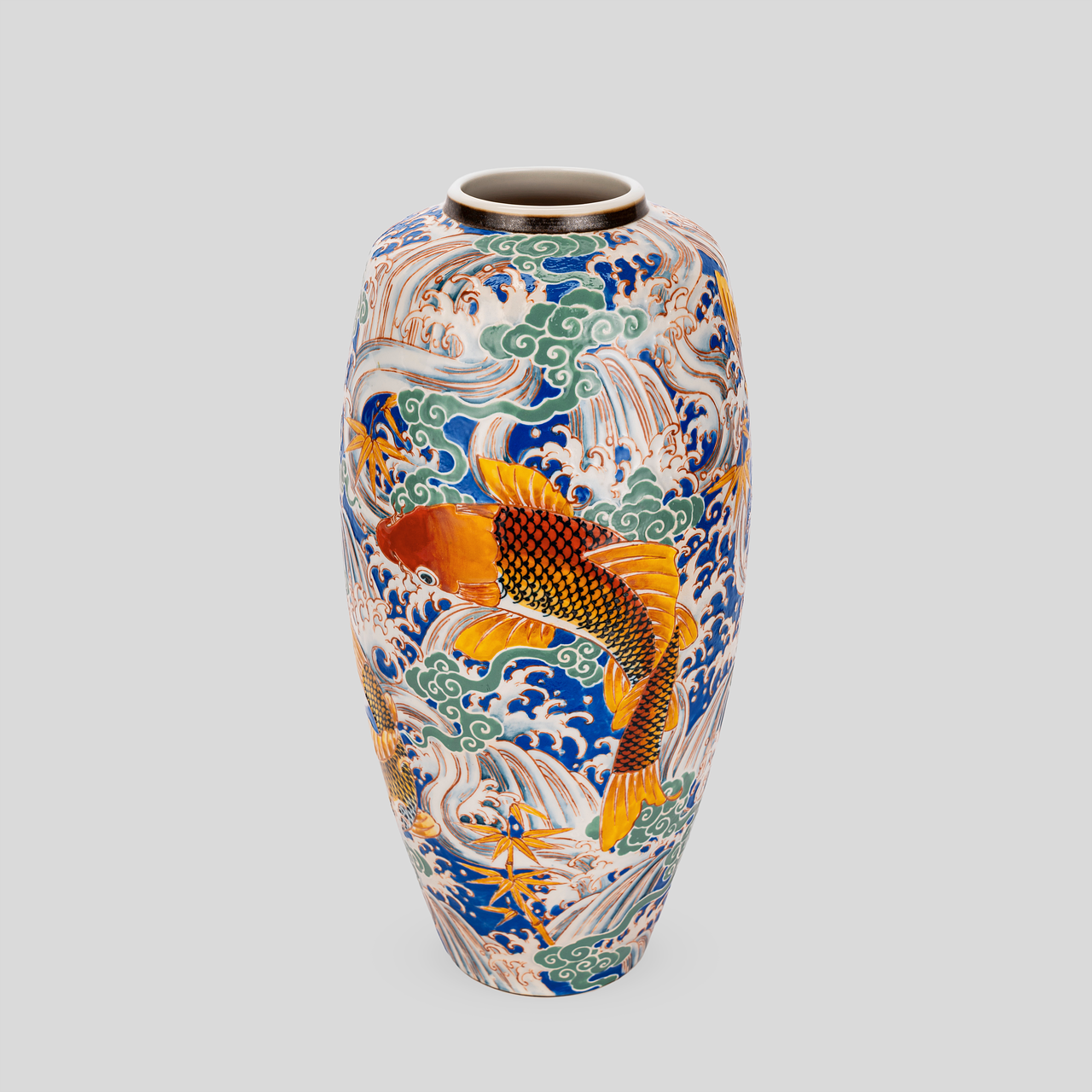
Mexican Talavera Pottery
Talavera pottery is more than just a decorative item; it is a vibrant expression of Mexican culture and history. Originating from the Spanish ceramic traditions, Talavera has evolved into a unique art form that reflects the rich heritage of Mexico. The colorful glazes and intricate designs tell stories of the land, its people, and their traditions. Artisans have perfected their craft over generations, making each piece not just functional but also a work of art that captures the essence of Mexican life.
What makes Talavera pottery truly special is the craftsmanship involved in its production. The process begins with high-quality clay sourced from the region, which is then shaped by hand or with a potter's wheel. Once the pieces are formed, they undergo a meticulous drying process before being fired in a kiln. The real magic happens when artisans apply their colorful glazes, often inspired by nature and local flora. The vibrant colors, including deep blues, yellows, and greens, are achieved using natural pigments, making each piece a testament to the artisans’ skill and creativity.
One of the most fascinating aspects of Talavera pottery is its design motifs. These motifs often include floral patterns, geometric shapes, and even scenes from daily life. Each design carries meaning, often reflecting the local culture and traditions. For example, floral patterns symbolize growth and renewal, while geometric designs can represent the harmony of nature. The artisans' ability to blend these elements into a cohesive piece is what sets Talavera apart from other pottery styles.
Moreover, the legacy of Talavera pottery is not just in its aesthetic appeal but also in its cultural significance. It has become a symbol of Mexican identity, celebrated in festivals and art exhibitions around the world. Many artisans still use traditional methods passed down through generations, ensuring that the craft remains alive and relevant in contemporary society. This dedication to tradition, combined with a willingness to innovate, has allowed Talavera pottery to flourish and adapt to modern tastes while retaining its historical roots.
In recent years, there has been a resurgence of interest in Talavera pottery, with contemporary artists experimenting with new designs and techniques. This blend of tradition and modernity is not only revitalizing the craft but also attracting a new generation of enthusiasts. Today, you can find Talavera pottery in homes across the globe, serving as a reminder of the rich cultural tapestry that Mexico has to offer.
- What is Talavera pottery made of? Talavera pottery is made from high-quality clay, which is shaped and then fired in a kiln. The vibrant glazes are created using natural pigments.
- How can I identify authentic Talavera pottery? Authentic Talavera pottery is typically hand-painted, features bright colors, and often includes traditional motifs. Look for the Mexican government seal that certifies its authenticity.
- Is Talavera pottery safe for food use? Yes, when properly made and glazed, Talavera pottery is safe for food use. However, it's essential to check that the pottery is lead-free.
- Where can I buy Talavera pottery? You can find Talavera pottery in artisan markets, specialized shops, and online retailers that focus on authentic Mexican crafts.
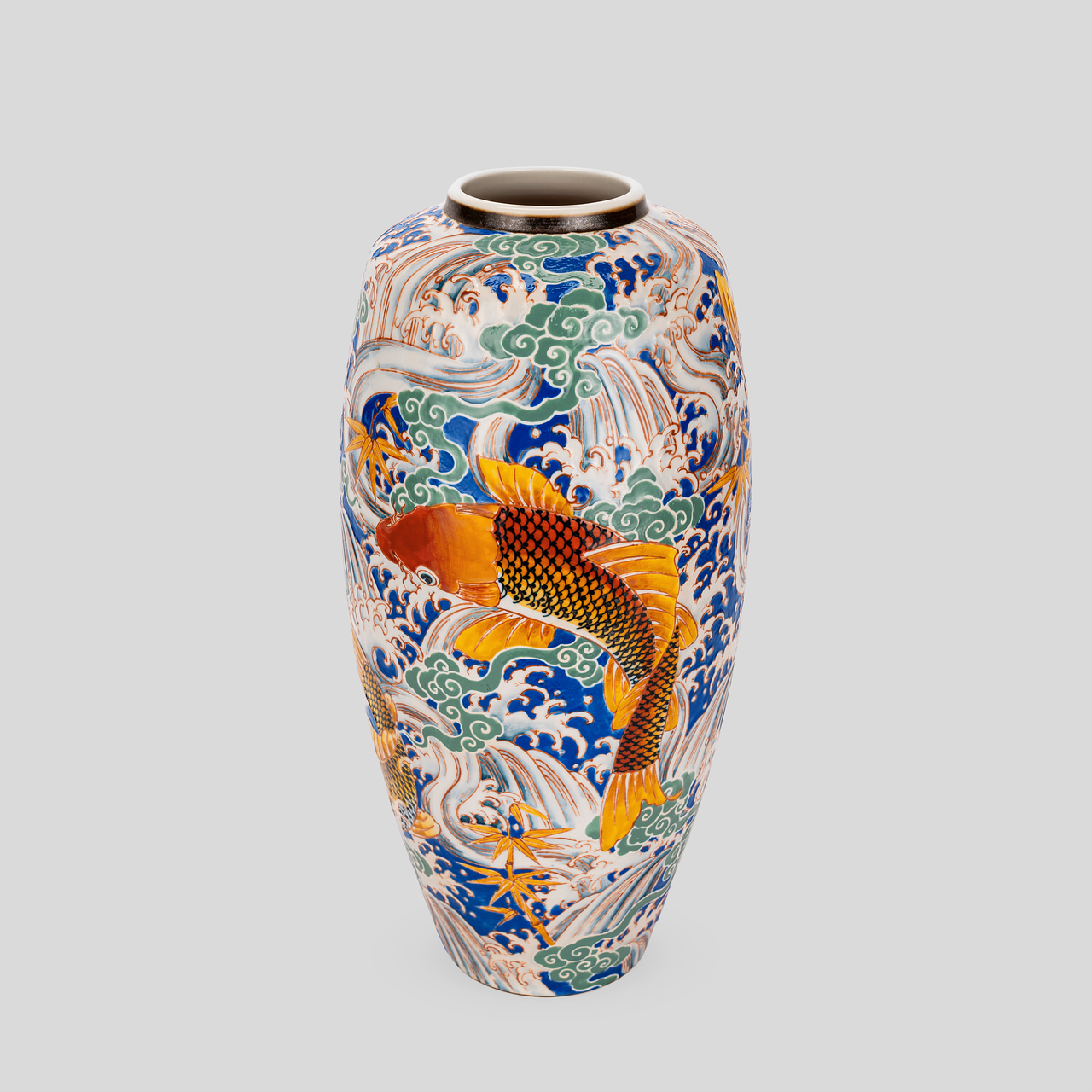
Techniques and Styles
When it comes to Talavera pottery, the techniques and styles involved in its creation are as vibrant and colorful as the pieces themselves. Originating from the Spanish artisans who settled in Mexico, Talavera has evolved into a unique form of pottery that reflects the rich cultural tapestry of the region. The process begins with the selection of high-quality clay, which is then shaped into various forms—everything from plates and bowls to decorative tiles and figurines. The artisans utilize a range of techniques that have been passed down through generations, ensuring that each piece is not only functional but also a work of art.
One of the most notable techniques employed in Talavera pottery is the majolica method. This involves applying a tin glaze to the pottery, which gives it a distinctive white background and allows for vibrant colors to be painted on top. The colors used are often derived from natural minerals, and they can range from deep blues and greens to bright yellows and reds. The intricate designs often depict floral patterns, animals, and traditional Mexican motifs, creating a visual feast for the eyes.
Another important aspect of Talavera pottery is the hand-painting technique. Each piece is meticulously painted by hand, which means no two items are exactly alike. This individuality is a hallmark of Talavera, making each piece a unique treasure. The artisans often work in small workshops, where they can focus on the details that make their work stand out. The combination of traditional techniques and personal artistry results in a product that is not only beautiful but also tells a story of cultural heritage.
In addition to the majolica and hand-painting techniques, Talavera pottery is also characterized by its firing process. The pottery is fired in a kiln at high temperatures, which not only strengthens the clay but also sets the glaze and paint. This process can vary in duration and temperature, and the skill of the artisan plays a crucial role in achieving the desired outcome. The final result is a durable and vibrant piece of art that can be used in everyday life or displayed as a decorative item.
To summarize the techniques and styles that define Talavera pottery, we can look at the following table:
| Technique | Description |
|---|---|
| Majolica | A tin glaze applied to create a white background for vibrant colors. |
| Hand-Painting | Individual artisans paint designs by hand, ensuring uniqueness. |
| Firing Process | High-temperature firing strengthens the pottery and sets the glaze. |
Through these techniques and styles, Talavera pottery not only showcases the skill and creativity of its artisans but also serves as a window into the cultural identity of Mexico. Each piece is a celebration of tradition, artistry, and the enduring spirit of a community that values its heritage. As you explore the world of Talavera, you’ll find that every bowl, tile, and decorative item tells a story—one that connects the past with the present and continues to inspire future generations.
- What is Talavera pottery? Talavera pottery is a type of Mexican ceramic known for its colorful glazes and intricate designs, originating from Spanish artisans.
- What are the main techniques used in Talavera pottery? The primary techniques include the majolica method, hand-painting, and high-temperature firing.
- Is Talavera pottery safe for food use? Yes, when properly made and glazed, Talavera pottery is safe for food use, but always check for lead-free certification.
- How can I care for my Talavera pottery? To maintain its beauty, clean with mild soap and water, avoiding harsh chemicals and abrasive materials.
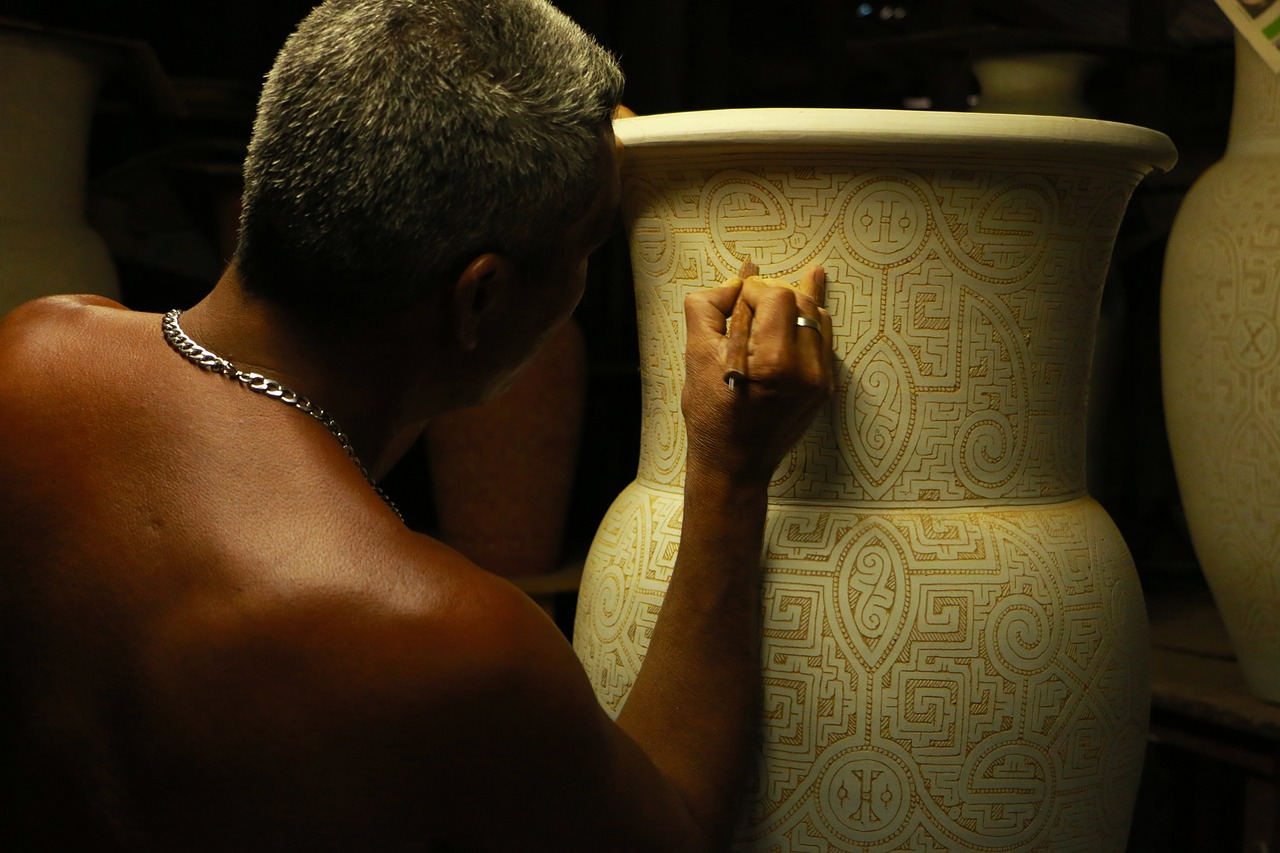
Ancient Greek Pottery: Art and Function
When we think of Ancient Greek pottery, we often picture stunning vases adorned with intricate designs that tell stories of gods, heroes, and everyday life. But these beautiful artifacts served a dual purpose: they were not just decorative pieces but also practical items used in daily life. From amphorae that stored oil and wine to kraters that mixed water and wine for feasting, pottery was essential in ancient Greek society.
The artistry behind these vessels was remarkable, showcasing the skill and creativity of potters and painters. Each piece was carefully crafted, often using local clay, and then fired in a kiln to achieve durability. The functionality of these pots is just as important as their aesthetic appeal. They were designed to hold specific items, and their shapes were often dictated by their intended use. For example:
- Amphorae: Tall, narrow vessels used for storing liquids.
- Kraters: Large bowls used for mixing wine and water.
- Oinochoe: Wine jugs with a spout for pouring.
But what truly sets Ancient Greek pottery apart is the artistic expression found on their surfaces. The Greeks pioneered two main painting techniques: black-figure and red-figure. In black-figure pottery, figures and scenes were painted in a black slip, which turned glossy when fired, while the background remained the natural red color of the clay. In contrast, red-figure pottery allowed artists to paint the background black, leaving the figures in the natural clay color. This shift not only provided greater detail but also opened up new avenues for artistic expression.
These vessels often depicted scenes from mythology, athletics, and daily life, effectively serving as a visual narrative of Greek culture. For instance, the famous Athenian amphorae often showcased athletic competitions, celebrating the spirit of the Olympics, while other pieces depicted tales from Greek mythology, such as the exploits of Hercules or the adventures of Odysseus. It's fascinating to think about how these pieces were not merely functional but also served as a medium for storytelling, connecting the past with the present.
Moreover, the significance of these artifacts extends beyond their immediate utility and beauty. They provide invaluable insights into the social, political, and religious practices of ancient Greece. Archaeologists and historians study these pieces to understand the values, beliefs, and daily life of the people who created and used them. As such, Ancient Greek pottery remains a crucial part of our understanding of human history.
In conclusion, Ancient Greek pottery is a remarkable blend of art and function. These vessels were not just tools for everyday life; they were canvases for artistic expression and storytelling. The legacy of these beautiful artifacts continues to influence modern ceramic practices and serves as a testament to the creativity and ingenuity of ancient civilizations.
- What are the main types of Ancient Greek pottery? Ancient Greek pottery includes various types such as amphorae, kraters, oinochoe, and kylixes, each serving different functions.
- What are the two main painting techniques used in Ancient Greek pottery? The two primary techniques are black-figure and red-figure painting, each allowing for different artistic expressions.
- How did Ancient Greek pottery reflect their culture? The designs often depicted scenes from mythology, daily life, and athletic competitions, providing insights into Greek values and beliefs.
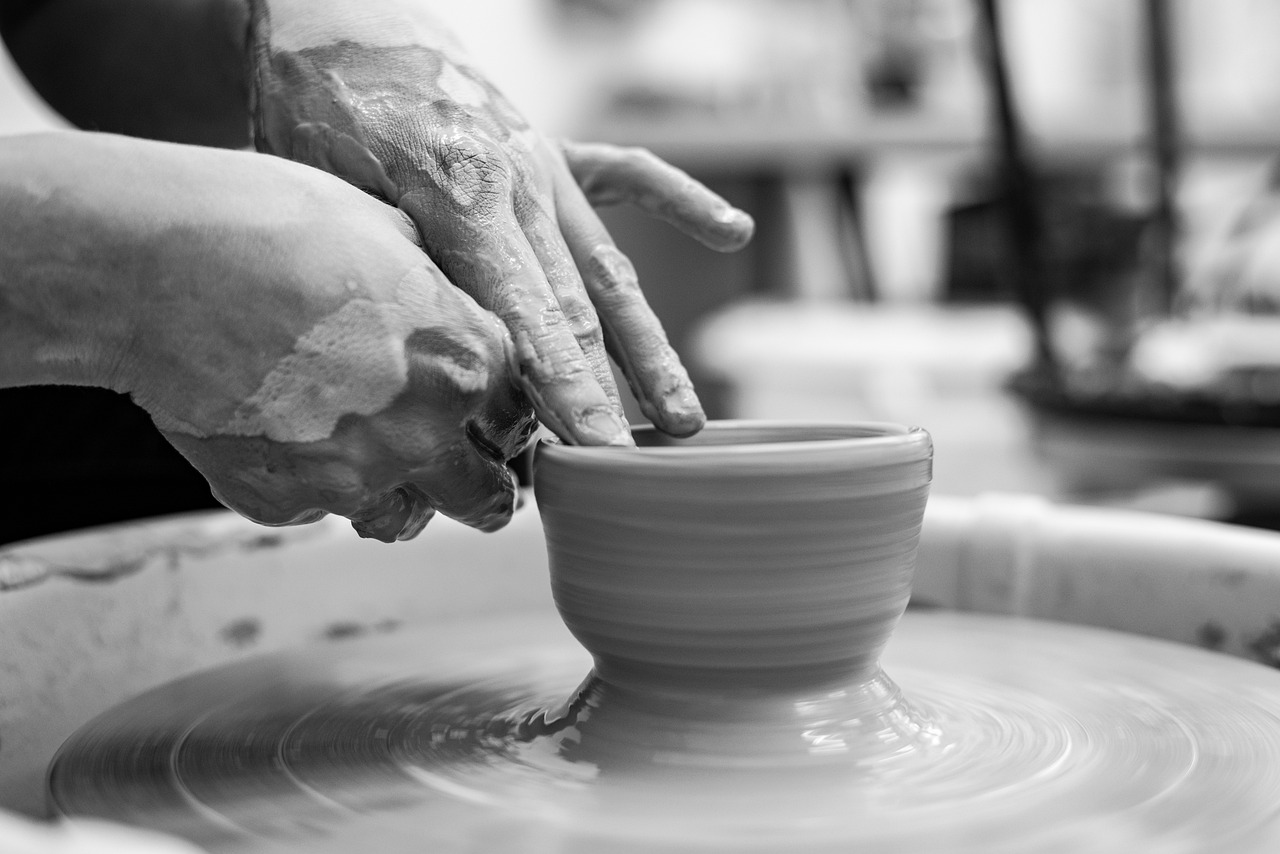
Black-Figure and Red-Figure Techniques
The world of ancient Greek pottery is a treasure trove of artistic expression, and at the heart of this legacy are the black-figure and red-figure techniques. These two methods not only transformed pottery into a canvas for storytelling but also showcased the incredible skill of the artisans of the time. Imagine a potter, carefully shaping clay, then meticulously painting intricate scenes that would narrate tales of gods, heroes, and daily life. This was not just pottery; it was a way to capture the essence of Greek culture.
The black-figure technique, developed around the 7th century BCE, involved applying a slip (a liquid mixture of clay and water) to the surface of the pottery, which would turn black when fired. After the initial firing, artists would then use a sharp tool to incise details into the black surface, revealing the red clay beneath. This method allowed for striking contrasts and detailed imagery, making the pottery visually captivating. However, it also had its limitations, as the incised lines could only convey so much depth and emotion.
In contrast, the red-figure technique emerged around the 5th century BCE and revolutionized how artists depicted figures and scenes. Instead of painting the figures in black and incising details, artists would leave the figures in the natural red color of the clay while painting the background black. This shift not only allowed for greater flexibility in depicting human anatomy and movement but also enabled the use of fine brushwork to create more intricate details. As a result, red-figure pottery often showcased a greater sense of realism and dynamism.
To illustrate the differences between these two techniques, consider the following table:
| Feature | Black-Figure Technique | Red-Figure Technique |
|---|---|---|
| Development | 7th century BCE | 5th century BCE |
| Color Scheme | Figures painted black, background red | Figures left red, background painted black |
| Detailing | Incised lines for details | Brushwork for intricate details |
| Artistic Flexibility | Limited | Greater realism and expression |
The evolution from black-figure to red-figure pottery marked a significant shift in artistic techniques and preferences. Not only did the red-figure method allow for a more nuanced portrayal of the human form, but it also opened the door for artists to experiment with complex compositions and narratives. This transition reflects a broader cultural shift in ancient Greece, where the appreciation for realism and individual expression began to flourish.
As we delve deeper into the world of Greek pottery, we find that both techniques hold a special place in art history. They not only demonstrate the technical prowess of ancient artisans but also serve as a window into the values, beliefs, and stories of a civilization that continues to captivate us today. So, whether you find yourself drawn to the bold contrasts of black-figure pottery or the delicate details of red-figure works, each piece tells a story that transcends time.
Q: What is the main difference between black-figure and red-figure pottery?
A: The primary difference lies in the color scheme and technique used. Black-figure pottery features figures painted black with incised details, while red-figure pottery has the figures left in the natural red of the clay, with the background painted black.
Q: When did the black-figure technique first appear?
A: The black-figure technique originated around the 7th century BCE in ancient Greece.
Q: Why is red-figure pottery considered more advanced?
A: Red-figure pottery is considered more advanced because it allows for greater artistic flexibility, enabling artists to depict more realistic human forms and complex scenes with fine brushwork.
Q: Are there any famous examples of black-figure and red-figure pottery?
A: Yes, famous examples include the "Panathenaic amphorae" for black-figure and the works of artists like Euphronios and Euthymides for red-figure pottery, showcasing exceptional craftsmanship and artistry.
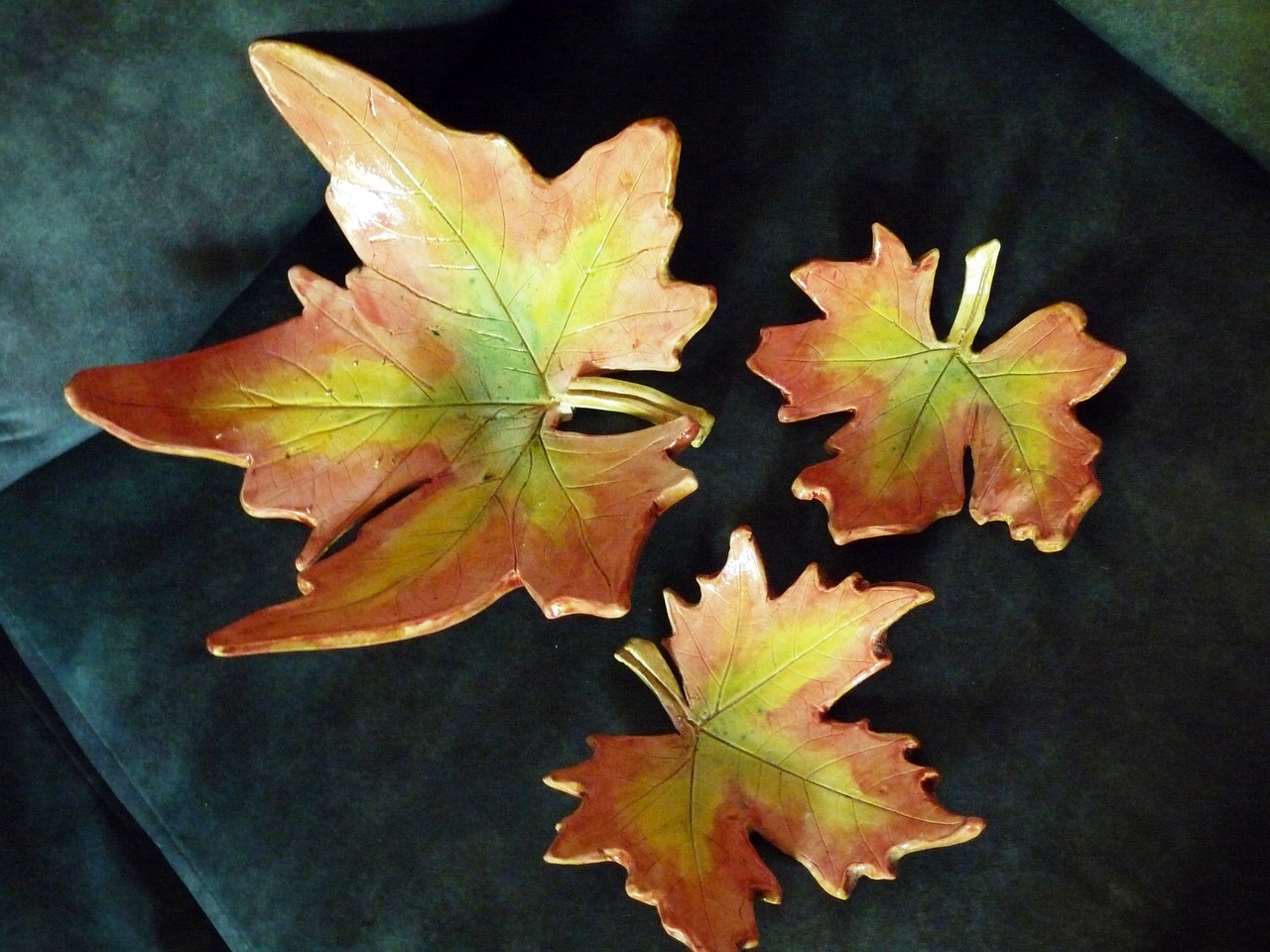
Conclusion: The Enduring Legacy of Ceramic Pottery
As we wrap up our journey through the fascinating world of ceramic pottery, it’s clear that these creations are more than just functional items; they are artistic expressions that echo the values, beliefs, and histories of the cultures that crafted them. From the intricate designs of Chinese porcelain to the vibrant hues of Mexican Talavera, each piece tells a story that transcends time and geography. The techniques and styles developed over centuries continue to inspire modern artisans, ensuring that the legacy of ceramic pottery remains vibrant and relevant.
Moreover, the impact of ceramic pottery extends beyond mere aesthetics. These artifacts have played a crucial role in trade, cultural exchange, and even social status throughout history. For instance, during the Ming Dynasty, porcelain became a highly coveted item, influencing global trade routes and establishing connections between distant lands. Today, contemporary artists are not only preserving these ancient techniques but also pushing the boundaries of what ceramic art can be, merging traditional methods with modern themes and technologies.
In a world that often feels transient, ceramic pottery offers a sense of permanence. It connects us to our ancestors and reminds us of our shared humanity. The tactile nature of clay, the skill involved in shaping it, and the beauty of the finished product create a bond that is both personal and universal. Whether displayed in a gallery or used in daily life, these pieces serve as a testament to human creativity and resilience.
As we reflect on the enduring legacy of ceramic pottery, it's worth considering how these artifacts will continue to evolve. Will future generations find new meanings in these ancient forms? Will they innovate in ways we can't yet imagine? One thing is certain: the story of ceramic pottery is far from over.
- What is ceramic pottery?
Ceramic pottery refers to objects made from clay and other ceramic materials that are shaped and then fired at high temperatures to create durable and often decorative items.
- What are the different types of ceramic pottery?
There are several types of ceramic pottery, including earthenware, stoneware, and porcelain, each distinguished by their composition, firing temperature, and appearance.
- Why is Chinese porcelain so famous?
Chinese porcelain is renowned for its exquisite craftsmanship, delicate designs, and the innovative techniques developed during the Ming Dynasty, making it a highly sought-after art form globally.
- How has ceramic pottery influenced modern art?
Modern artists draw inspiration from traditional pottery techniques, often blending them with contemporary styles to create innovative works that challenge our perceptions of ceramic art.
Frequently Asked Questions
- What is ceramic pottery?
Ceramic pottery refers to objects made from clay and hardened by heat. This ancient art form has been practiced for thousands of years, allowing cultures to express their creativity and craftsmanship through functional and decorative pieces.
- How did ceramic pottery originate?
The origins of ceramic pottery date back to prehistoric times, with the earliest known pieces found in East Asia. Early civilizations used simple techniques to shape and fire clay, leading to the development of more complex methods over time.
- What makes Chinese porcelain unique?
Chinese porcelain is renowned for its delicate beauty, strength, and intricate designs. The secret lies in the high-quality kaolin clay and specific firing techniques that create a translucent, glass-like finish, setting it apart from other types of ceramics.
- What is the significance of the Ming Dynasty in porcelain history?
The Ming Dynasty (1368-1644) is often considered the golden age of Chinese porcelain. It introduced innovative designs, such as blue and white ware, which became highly sought after both domestically and internationally, influencing global ceramic traditions.
- What are blue and white ceramics?
Blue and white ceramics are characterized by their striking cobalt blue designs on a white background. Originating during the Ming Dynasty, these pieces often feature intricate patterns and motifs, making them timeless collectibles admired around the world.
- How has contemporary Chinese ceramics evolved?
Modern Chinese ceramics blend traditional techniques with contemporary aesthetics. Artists today experiment with forms, colors, and concepts, pushing the boundaries of ceramic art while still honoring their rich heritage.
- What distinguishes Japanese ceramics?
Japanese ceramics are known for their unique styles and meticulous craftsmanship. Influenced by Zen philosophy, they often embody simplicity and natural beauty, showcasing a harmonious blend of tradition and innovation.
- What is Talavera pottery?
Talavera pottery is a vibrant form of ceramic art from Mexico, known for its colorful glazes and intricate designs. This pottery reflects the rich cultural heritage of Mexico, with techniques passed down through generations of artisans.
- What techniques are used in creating Talavera pottery?
Talavera pottery involves a series of intricate steps, including hand-molding, painting with natural pigments, and multiple firings. Each piece is unique, showcasing the artisan's skill and creativity while adhering to traditional methods.
- What themes are commonly found in Ancient Greek pottery?
Ancient Greek pottery often features themes from mythology, daily life, and athletic competitions. These vessels served both functional and artistic purposes, allowing artists to tell stories through detailed imagery and intricate designs.
- What are black-figure and red-figure techniques?
The black-figure and red-figure techniques revolutionized Greek pottery by allowing for detailed imagery. Black-figure pottery features figures painted in a black slip, while red-figure pottery leaves the clay red, allowing for more intricate detailing and shading.
- Why is ceramic pottery still relevant today?
Ceramic pottery continues to be a vital part of human expression and culture. Its rich history, combined with modern innovation, ensures that it remains a beloved art form that connects us to our past while inspiring future generations.



















